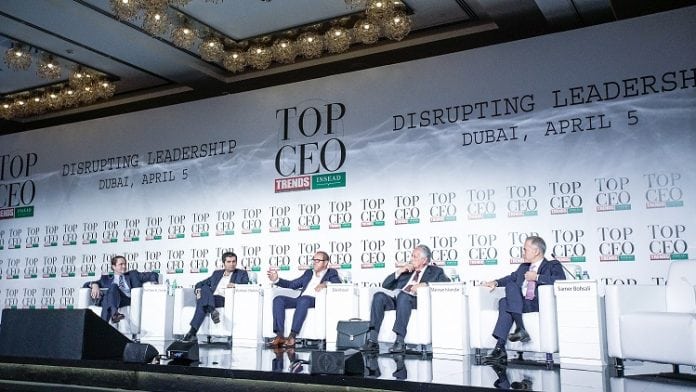
- One out of two employees in the GCC do not fully trust senior leadership
- Leadership 2.0 will be one of the main topics of discussion at Top CEO 2017
- SMEs and entrepreneurial ventures are the best learning platforms for young leaders
In a bid to tackle the challenges presented by the new reality, businesses in the region are undergoing a massive disruption, which calls for a new generation of business leaders who are ready to work in today’s complex environment.
To take their businesses to the next level, leaders need to walk the talk and be the true movers and shakers who are able to drive their companies’ transformation by themselves. However, experts believe achieving this task is not that easy.
Building trust
According to an Aon Hewitt study, the trust levels for senior leaders are at 47 percent today, meaning that, in essence, one out of two employees in the GCC do not fully trust senior leadership.
“This is where the emerging millennial leaders have to step up and bridge that gap between the younger generation in the workforce and the older generation of leaders. They have to be more approachable and involve the teams in the decision-making process. They need to also build on diversity and focus on the buy-in for any given ‘mission’, on a level that was not required one generation ago,” said Michael Gruber, Partner – Leadership Consulting, Aon Hewitt Middle East.
In focus
Leadership 2.0 will be one of the main topics of discussion at the upcoming Top CEO Conference & Awards, scheduled on April 10 and 11 at King Abdullah Economic City, Saudi Arabia.
The conference will include both on- and off-record sessions that will also tackle numerous other topics, including New Technologies, The Broken Job Machine, Private-Public Partnerships, Challenges of Slow Growth, Vision 2030, New Alliances, the Arab Image in the West, Antitrust Laws, Women and Leadership, and The Image War.
Ensuring strategic flexibility
Meanwhile, industry leaders maintain that it is important to have strategic flexibility in leadership. As a more distributed style of leadership can be much more powerful compared to a centralized one.
“This means that instead of one person looking at the possible opportunities and telling everyone where to go, you have a hundred people throughout your organization – mid-level and senior-level managers – exploring the opportunities,” said Prof. Miguel Lobo, Director of the INSEAD Abu Dhabi campus.
“You need to have strategic flexibility to adjust to plans, distributed leadership to find opportunities and, when something is working, you need to be able to drive execution. This complements the style of leadership that is meant for a fast paced environment,” added Prof. Lobo.
SMEs to engineer leadership growth
SMEs and entrepreneurial ventures could be one of the best learning platforms for young leaders. These will give them an opportunity to execute their innovative ideas in unconventional ways and script a new, disruptive path to success. However, experts believe SMEs and entrepreneurs have not been able to evolve to their full potential in the region as compared with the West.
“Unfortunately, the SME sector has not played a significant part in the national economy and, except for a few examples, SMEs have not really complemented any large corporations so far. The few successes were due to the large corporations taking an interest to help them,” said Amr Khashoggi, VP – Human Resources & Group Affairs, Zahid Group.
“SMEs need a lot of help and I do not mean just financing, but managerial and administrational assistance,” he added.
Save the date
This year, the Top CEO Conference & Awards will be held at Bay La Sun Hotel & Marina, King Abdullah Economic City, Saudi Arabia, on April 10 and 11.




































